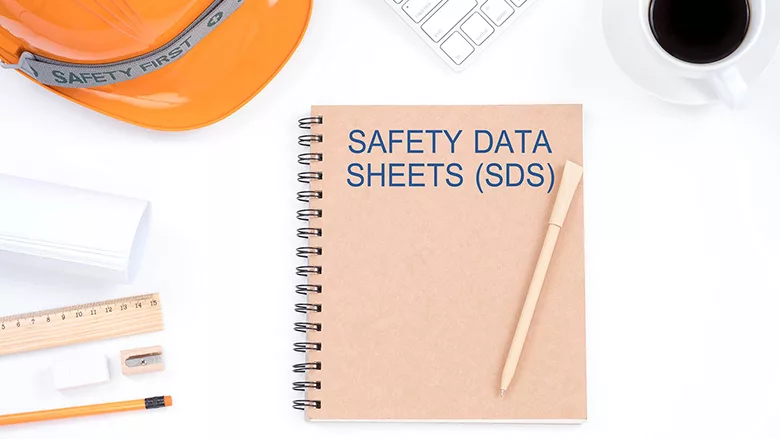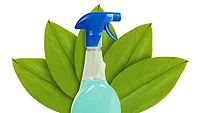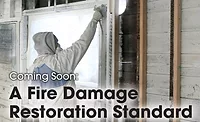When It Comes to Chemicals for Restoration Work, It’s Not Easy Being “Clean”

Photo credit: 3283197d_273 / iStock / Getty Images Plus via Getty Images
At a recent conference, a colleague was extolling the virtues of an astonishing new liquid cleaner for restoration work. “You just have to see it. The SDS is so clean!” my friend eagerly explained. As we fell into familiar conversation about better cleaning efficacy, and the sequential cleaning and then disinfecting as a “best practice” for surface hygiene, it was the one line extracted from his testimony that accompanied me home and now lives in my head rent-free: “The SDS is so CLEAN!”
My well-intentioned associate brings attention to something worth remembering: Chemicals are never intuitive. When I was 5 years old, my father gave me a hammer that I knew, by picking it up, was a good hammer. I also knew it was not as big, or heavy — or as good — as my father’s hammer. I knew it instinctively.
This is a simple way of saying you cannot do the same with a jug of disinfectant or a can of paint no matter how many you pick up. You can’t tell if it works or how well it works. Information is key.
Restoration and remediation professionals who operate without the right safety information risk missing the nail, or in some cases, mashing a thumb while learning to work more cautiously. The safety data sheet (the SDS that evolved from the MSDS) is mandatory in the worker protection context. But mandatory doesn’t mean everything you need to know is housed there (can’t make things too easy now). There is no doubt the SDS is important— to a degree. There is also no doubt that safety information must be mined from product labels, data sheets, manufacturer bulletins, online communities and increasingly from architectural specifications as the correct course of action for the prudent restoration professional.
Let’s end all doubt, the SDS is not definitive.
Please note, I do not make this statement as a duly designated safety professional (I’m not one). Instead, this is an observation chain made by someone who makes “better living through chemistry” work practically in the restoration and environmental arenas. Other more qualified safety pros may harbor differing opinions. However, I encourage you to read on. There are takeaways here worth having.
A USEFUL SDS
Starting at square one, every liquid consumable used for restoration and remediation should have an SDS including information such as the properties of each chemical; the health, physical and environmental hazards; protective measures; and the safety precautions for handling, storing and transporting the chemical. The SDS must also be easy to access as it is supposed to be used to educate and instruct people.
Is a clean SDS a useful SDS, however? That’s to say, has the manufacturer committed to providing the most data or to volunteering the least? It has become much easier, I contend, to find an SDS that provides minimal detail, contains no objectionable information and, by saying less, conveys a benign product despite selectively excluding key criteria. Color, flashpoint, VOC content, pH — all should be clearly indicated. What, after all, is the intent of withholding this information? How can a manufacturer not know it? The thing is, sometimes a product is actually made by a toll manufacturer. Remember to QA your supply chain.
Even so, I still contend the SDS should never be so naked. Lately, favorite terms include “Not Available,” “Not Applicable,” “Not Determined,” “None” and all other manner of negative-nothing language. Sometimes this is due to laziness as SDS software robotically drops these placeholders into position, putting the burden on an actual human being to add data of relevance and value, which doesn’t happen as often as it should. More insidiously, however, are the obviously strategic omissions. Whether labels or SDS, there is a school of thought in some circles that the user is responsible for proper usage.
To be blunt, these omissions are shameful. An educated consumer uses products safely to accomplish goals. Information also avoids preventable problems like out-of-order operations, surprising reactivity, and the list goes on. Surface compatibility issues can lead to big problems (restoration contractors, have you felt hung out to dry when the coating you were applying incidentally contacted CPVC pipe, and now you own that pipe?). You should never have to ask your manufacturer to disclose this information. It should be freely available. Is the SDS always the right location? Actually no. But the SDS can refer to the other resources mentioned.
MORE TO KNOW
Safety data sheets must be accurate at the time of every sale or importation of the hazardous product. Suppliers have an ongoing responsibility to make sure the SDS and labels are accurate and compliant. There is no longer a requirement to update an SDS every three years (per the previous WHMIS 1988 requirement that no longer applies).
How often does the SDS need to be updated/replaced? This depends on whether you are a manufacturer/supplier or an end user.
OSHA maintains specific SDS requirements for manufacturers and suppliers. When preparing the sheets, you must ensure the information accurately reflects the scientific evidence behind the hazard classification. If you become aware of new and significant information, you should add it (within three months). This may include hazards of a chemical or ways to protect against such hazards.
You are responsible for the latest version. And you must ensure that this information is easily accessible for your employees. Ask your supplier or the manufacturer to supply you with the latest version.
Chemical suppliers are expected to review, revise and update their SDS periodically. They should do this for all the products they sell. As new hazard information is discovered, changes should be made. The same goes for protective measures and when product formulations have been altered.
Remember that once suppliers have updated their SDS, they aren’t required to send the updates to customers immediately.
“IT AIN’T WHAT THEY CALL YOU, IT'S WHAT YOU ANSWER TO.”
What makes a label important? The correct answer is that it is the only source of information in front of the user when the container is opened. While that is no guarantee it will be consulted, the label would have to be intentionally overlooked. It is a communication platform of singular value. The label states what it does, often what the product shouldn’t do, offers fundamental EH&S guidance and notes application tools needed.
The Globally Harmonized System (GHS)—the United Nations’ international approach to hazard communication—establishes language around “criteria for the classification of health, physical and environmental hazards, as well as specifying what information should be included on labels of hazardous chemicals as well as safety data sheets.” As noted, labels are another important hazard communication tool that, like safety data sheets, the GHS initiative has improved on over the years.
Always read labels when chemicals are delivered to your shop. Is the label also on file? It should be easy to find. Most labels are now available as PDFs. There is one other crucial element to labels: The real estate to lay out info is limited. Therefore, the label’s job is also to direct to where additional information can be found, notably product/tech sheets, online communities and specifications.
THERE’S MORE TO LOOK FOR
All dependable manufacturers should be able to provide you a technical datasheet that blows out the broad-brush found on the SDS and label. Specific guidance around a wide range of surface compatibility scenarios is just one reason to consult these documents. For instance, the pandemic has emphasized the difficulties of using certain disinfectants in “occupied” spaces for the first time, where lingering odors and fogged surfaces are concerning to both distressed clients and surprised contractors. Does your manufacturer issue timely supplemental bulletins as well? Something as simple as a list of products that meet the EPA's criteria for use against SARS-CoV-2 can be valuable reference material.
Of course, some answers are too specialized or narrow to be found on an SDS or label. This is where the knowledge base of an online community shines. Can I use this product to clean up beryllium dust? Why aren’t ozone generators, UV lights or air purifiers on List N? Is there information for asthma related to certain active ingredients? An enlightened, versatile and ever-evolving online community can provide contextual information and eliminate the frustrating search for self-service support. At ICP, we built the MasterWorks knowledge platform to give owners, installers, specifiers and our channel partners a place to connect, especially with that experience and context, and to then share among a project’s materially interested parties (MIPs).
ONLINE COMMUNITIES OFFER THE LATEST INFORMATION
An online community is often the most nimble and responsive platform. Articles can be added to a knowledge base (which every community should have) to enumerate emerging issues faster than can be captured and communicated by revisions to SDS or tech data sheets (and obviously far faster than changing labels and websites).
A good example is the constant evolution of standards at the Institute for Inspection, Cleaning and Restoration Certification (IICRC). This year, there is expected a new S520 Mold standard. And optimistically, by year’s end, there could be two new fire standards: S700 Structural Fire and S760 Wildfire. Also important, but not much talked about, are the two new field guides for health and safety. There is one each for professional cleaners and for disaster restorers. The objective here is to produce a safety document that contains the essentials common across disciplines. In turn, this frees up and minimizes the repetition of health/safety in the ANSI-governed standards. As of this writing, both versions have been proceeding via a transparent and consensus-driven development very similar to IICRC standards. The professional cleaners field guide has been through a peer review, and a response is being assigned to each comment. You can monitor the MasterWorks community for new postings about industry and technology updates.
Looking for a reprint of this article?
From high-res PDFs to custom plaques, order your copy today!








